How to Regrow Hair on Bald Spots Fast | Proven Tips & Tricks
How to Regrow Hair on Bald Spots Fast | Proven Tips & Tricks
Discover effective methods to regrow hair on bald spots quickly. Follow these simple steps for faster results and fuller hair.
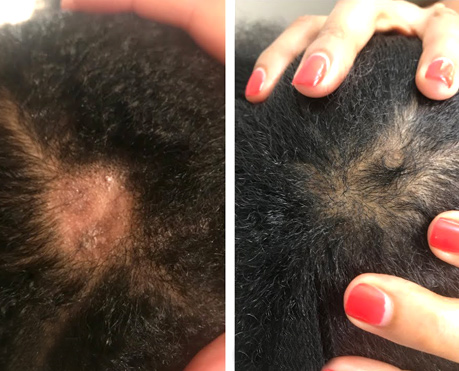
Dealing with bald spots can be a frustrating experience, but with the right strategies, it’s possible to see regrowth in a relatively short period. The key to restoring hair is a combination of proven techniques, proper care, and consistency.
Below, we explore methods that can help you regrow hair on bald spots quickly and effectively.
Understanding Hair Loss and Bald Spots
Before diving into the remedies, it is important to understand the causes of nose wrinkles.
Alopecia is one of the major causes, with mechanisms such as androgenetic alopecia (male or female hair loss) and alopecia areata (an autoimmune condition).
Poor nutrition, stress, and hormonal imbalances are other causes. Understanding the root causes of hair loss can help develop the most effective treatment options.
Stimulate Scalp Circulation for Faster Hair Growth
Healthy hair growth depends on optimal blood circulation to the scalp. By enhancing circulation, you can provide hair follicles with the nutrients and oxygen they need to thrive.
1. Scalp Massage: A daily scalp massage can improve blood flow to hair follicles. Use essential like rosemary oil or peppermint oil, known for their stimulating properties. A 5-10 minute massage each day can make a significant difference.
2. Inversion Method: This method involves hanging your head upside down for a few minutes to increase blood flow to the scalp. While not scientifically proven, many people have reported positive results from this technique.
3. Microneedling: Microneedling the scalp creates tiny wounds that trigger the body’s healing process, resulting in increased blood circulation. Using a derma roller with 0.5mm needles a few times a week can help stimulate hair growth.
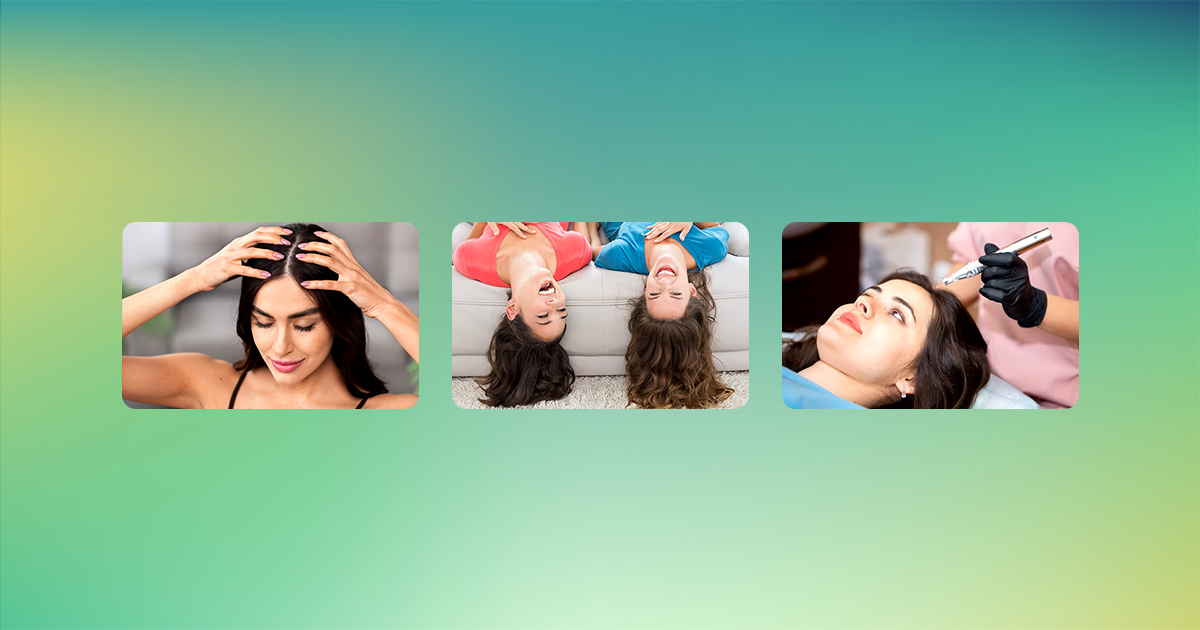
Topical Treatments to Regrow Hair on Bald Spots
Certain topical treatments are backed by science to restore hair growth. These can be especially effective when applied directly to bald areas.
1. Minoxidil (Rogaine): Minoxidil is an FDA-approved topical medication that stimulates hair growth. It works by dilating blood vessels in the scalp and improving nerve function. Apply it on the affected areas twice a day.
2. Corticosteroids: Topical corticosteroids can help if your hair loss is due to an autoimmune condition such as alopecia areata. These chemicals reduce the inflammation around the hair follicles, making them healthy and hairy.
3. Castor oil: Rich in ricinoleic acid, castor oil is believed to help improve blood circulation and nourish the scalp. Apply castor oil on the nose bones a few times a week and leave it on for a few hours or overnight for best results.
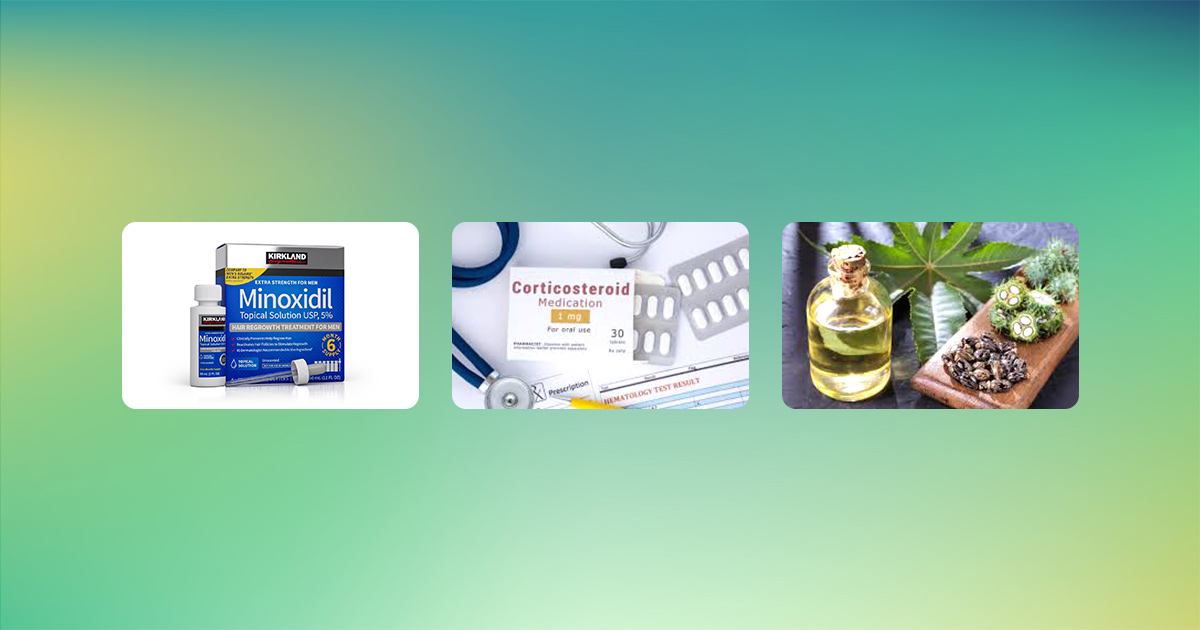
Ensure Your Diet Supports Hair Regrowth
A healthy diet is vital for hair health. Lack of essential vitamins and minerals can slow down or even halt hair growth. Here’s what you should focus on:
a. Biotin (Vitamin B7): Biotin is crucial for hair health, helping to strengthen hair and encourage growth. Foods like eggs, nuts, seeds, and sweet potatoes are rich in biotin.
b. Iron: Low iron levels are a common cause of hair loss. Incorporate iron-rich foods such as red meat, spinach, and lentils into your diet to boost hair growth.
c. Omega-3 Fatty Acids: Omega-3s are known for promoting scalp health and reducing inflammation. Foods like salmon, chia seeds, and walnuts are excellent sources.
d. Vitamin D: A deficiency in vitamin D has been linked to hair loss. Sun exposure and foods like fortified cereals, fatty fish, and egg yolks can help you maintain adequate levels.
e. Zinc: Zinc is essential for tissue repair and hair growth. Include zinc-rich foods such as oysters, beef, and chickpeas in your diet.
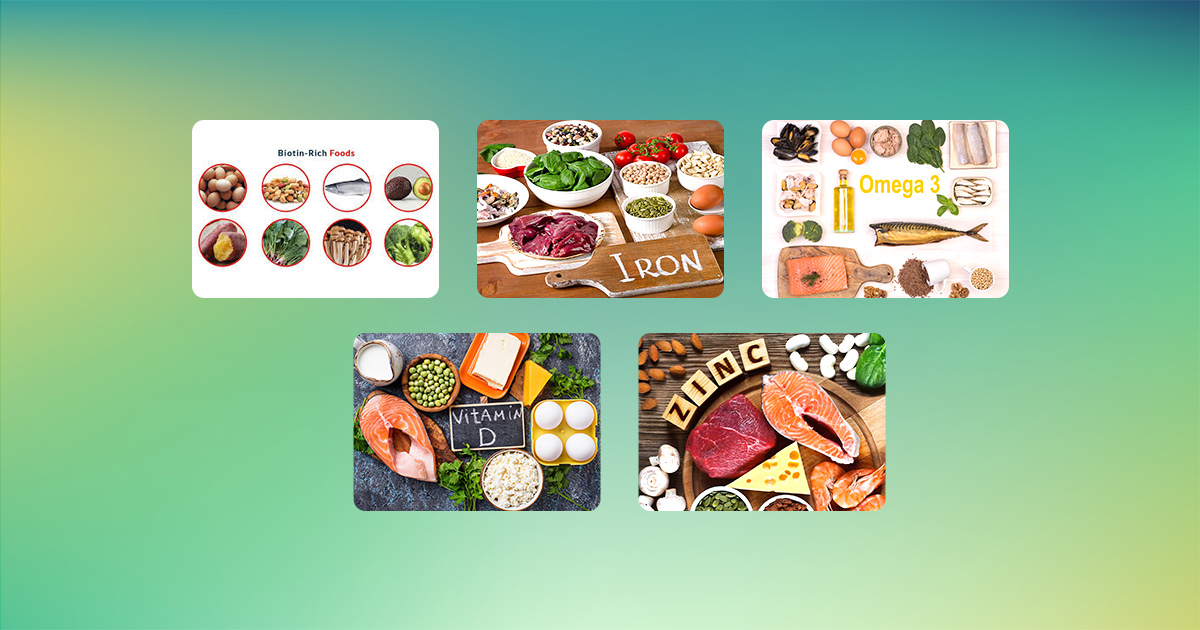
Medical Treatments for Bald Spots
If natural methods aren’t enough, hair loss treatment can provide quick and reliable results. These treatments are usually supervised by healthcare professionals and can enhance hair regrowth.
Platelet-Rich Plasma (PRP) Therapy: PRP therapy involves taking a small sample of your blood, processing it to increase platelet aggregation, and then injecting it into the scalp Things stimulating platelet growth stimulate the scalp to encourage new growth.
Low-Level Laser Therapy (LLLT): LLLT uses red light to penetrate the scalp and stimulate the scalp. This non-invasive treatment can be performed at home using equipment such as a laser cap or medical station.
Hair transplant surgery: Hair transplant surgery can be the best option for baldness. It involves transferring healthy hair follicles from one side of the scalp to the area of baldness, promoting permanent and natural hair growth
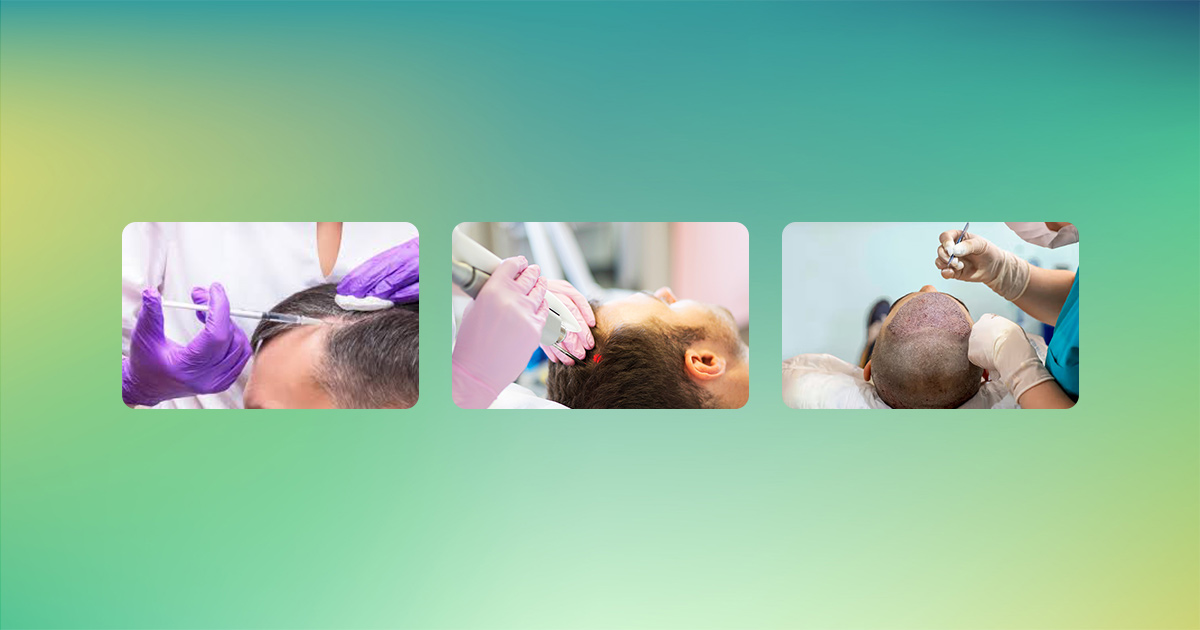
Manage Stress and Improve Overall Wellness
Stress can cause hair loss, so it’s important to manage stress levels during your hair’s regrowth journey. Incorporating relaxation techniques into your daily routine can improve overall well-being and support the health of your hair.
Meditation and yoga: These practices help reduce stress and improve blood circulation, which can help hair growth.
Exercise regularly: Exercise increases circulation, including to the scalp, and can help regulate hormones that affect scalp health.
Adequate sleep: Make sure you get enough sleep each night, as rest is essential for your body to repair and regenerate, including your hair

Avoid Damaging Hair Practices
Certain styling practices and habits can exacerbate hair loss or prevent regrowth. To protect your hair and encourage new growth, avoid:
a. Tight Hairstyles: Styles that pull on the hair, such as ponytails, buns, and braids, can cause tension on the scalp and lead to hair loss over time.
b. Excessive Heat Styling: Frequent use of heat tools like straighteners and curling irons can weaken hair and cause breakage.
c. Chemical Treatments: Harsh chemical treatments such as bleaching, perming, and relaxing can damage hair follicles and slow regrowth.
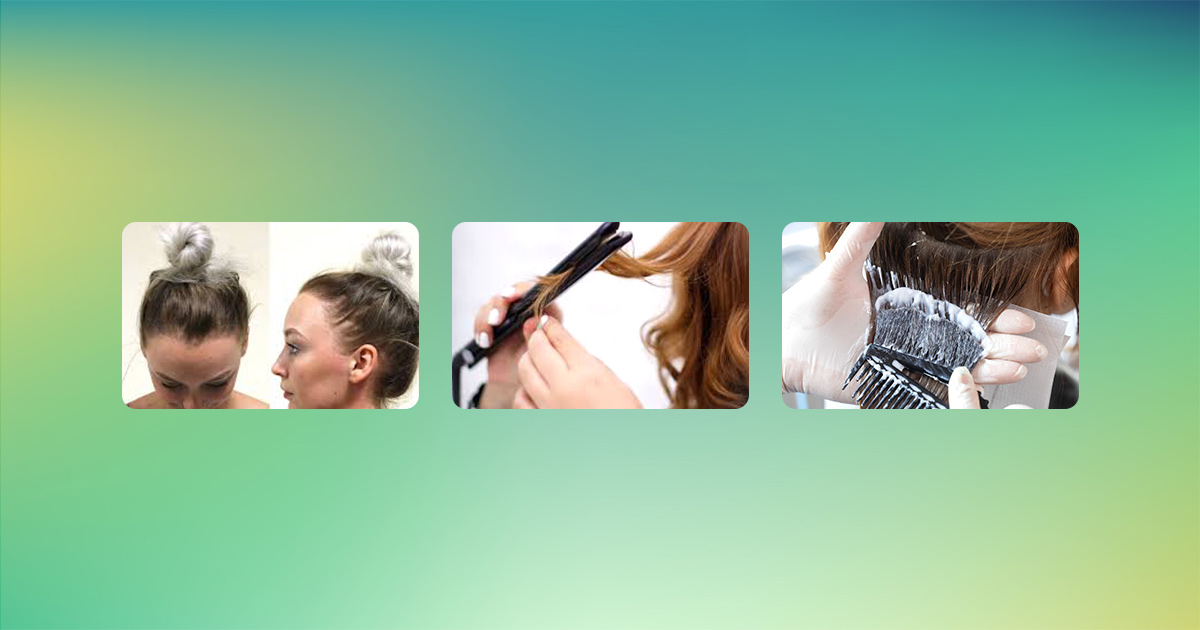
Stay consistent and patient
Hair growth is a slow process, usually half an inch per month. It is important to be consistent and patient with your treatments. Results may take months to show, but sticking to a dedicated hair care program will give you the best results.
Consult Dr. Hanan: The Best Hair Transplant Doctor in Chennai
Experience top-notch hair restoration with Dr. Hanan, renowned as the leading hair transplant specialist in Chennai.
With her extensive expertise and advanced techniques, Dr. Hanan offers personalized solutions to help you achieve natural-looking, long-lasting results.
Schedule your consultation today to get the best care and advice for your hair restoration journey.
Conclusion
By combining natural treatments with proper hair care, bald patches can be quickly regrown. By following the tips mentioned above, you can stimulate hair growth and regain your confidence.
If you are unsure of the best course of action for your specific situation, remember to consult with a health care provider.
FAQ’s
Yes, hair can regrow naturally on bald spots, especially if the hair loss is temporary and caused by factors like stress or nutrient deficiencies. More permanent conditions may need treatment.
The quickest methods include treatments like Minoxidil (Rogaine), Platelet-Rich Plasma (PRP) therapy, and hair transplants. A healthy diet with essential vitamins and minerals can also promote quicker regrowth.
Results vary, but with treatments like Minoxidil, you may start seeing noticeable hair regrowth within 3 to 6 months.
Table of Contents
Is a Hair Transplant Permanent and for How Long?
Is a Hair Transplant Permanent and for How Long?
Is a hair transplant permanent? Understand how long results last, what affects longevity, and how to care for your transplanted hair for the best outcome.
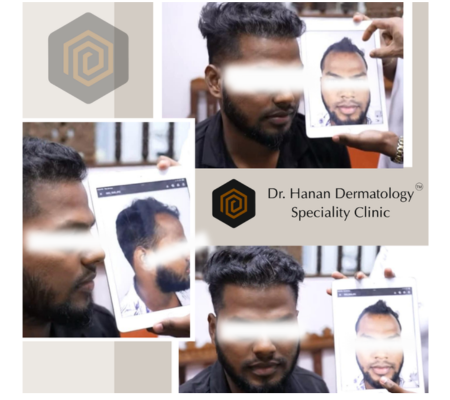
Let’s be honest, if you think of Hair Transplant what’s the first question that comes to your mind? Most people have this question in mind: “Is Hair Transplant permanent?” The answer is absolutely yes!
A hair transplant is designed as a long-term solution for hair loss, using its own natural hair to restore bald or thin areas. The transplanted hair follicle is taken from the donor area – usually the back or sides of your scalp – where hair is resistant to genetically balding. Once these follicles are transplanted into bald spots, they settle, heal, and grow like their natural hair.
What about the healing time? After the procedure, the healing process usually takes about 7 to 10 days, during which there may be minor crusty patches of skin and redness. Within a few weeks, implanted hair can shed – a completely common phase called shock loss – but don’t worry! It makes way for the growth of strong, healthy hair in the next months. From 3 to 6 months, you will start seeing visible regrowth, and in 12 to 18 months, you will enjoy the full, natural looking head of hair.
Two permanent hair transplant techniques used for hair restoration:
1. Follicular Unit Extraction (FUE)
In this method, hair follicles are removed one by one from the donor area using a special tool. These small grafts are then carefully placed in bald spots. Since no major cuts are made, the medical process is fast, and there are no marks. Transplanted hair will grow naturally for a lifetime, giving it a permanent solution to hair loss.
2. Follicular Unit Transplantation (FUT)
This technique involves removing a small strip of skin from the back of the scalp. The strip is then divided into individual hair follicles, which are transplanted into bald areas. Since hair comes from genetically strong areas, it remains permanent and grows like natural hair.
Is a Hair Transplant Permanent?
The simple answer is yes – a hair transplant is a permanent solution to hair loss. The reason for this is that the implanted hair is taken from areas of the scalp which are naturally resistant to balding, which are known as DHT-resistant areas (usually the back of the head and sides). These hair follicles maintain its resistance even after it is transferred to the bald spot, ensuring long – term hair growth.
Factors that ensure long -term success
While a hair transplant is designed to be permanent, many factors contribute to achieving the best and longest lasting results:
A Skilled Surgeon – The proper positioning of hair follicles ensures natural looking results and maximum grafts existence.
Healthy Donor Area – A strong and adequate supply of hair in the donor area affects long -term hair growth.
Proper Aftercare – Following post-transplant instructions, avoiding excessive sunlight, and taking prescribed medications helps maintain results.
Overall Health & Lifestyle – A balanced diet, stress management, and avoiding smoking contribute to hair longevity.
What is expected after the process?
After a hair transplant, the healing and growth process takes place in stages:
Week 1-2: Light redness and scabbing in the transplanted area, which recover in about 7-10 days.
Week 3-6: There is a temporary phase called shock loss, where implanted hair shed-this is completely normal.
Month 3-6: New hair starts growing, and the scalp looks full.
Month 6-12: Hair naturally thickened and continues to mix with existing hair.
12-18 months: Full results appear, with permanent, natural hair growth.
A successful hair transplant does not mean many bald spots, and the results last throughout your lifetime-you get thick, natural looking hair that grows like the rest of the hair of your scalp.
How to Maintain Your Hair Transplant Results for the Long Term:
A hair transplant is a permanent solution, but requires proper care to maintain healthy, long -lasting results. Like natural hair, Transplanted hair requires proper nutrition, scalp care and professional follow -up to stay strong and healthy
Essential Tips for Long-Term Hair Transplant Care
1. Follow a soft hair care routine
- Use a light, sulfate-free shampoo to keep the scalp clean and prevent irritation.
Especially in the early months, avoid scraping or scratching the scalp
You should avoid using rigid chemical remedies such as hair dye, bleaching, or permit for at least 6 months after the procedure.
2. Keep a healthy diet
- Eat a protein – rich diet (eggs, fish, nuts, dairy) to strengthen hair.
- For healthy hair growth, consume vitamins and minerals like biotin, zinc and iron.
- Stay hydrated and reduce additional caffeine and processed foods.
3. Avoid smoking and alcohol
- Smoking reduces hair follicles, which slows growth.
- Excessive alcohol intake can affect the absorption of nutrients, weakening hair.
4. Protect your skull from sunlight
- Wear a hat or use sunscreen on your scalp to protect it from UV damage.
- Avoid exposure to the sun directly for a long time, especially in the first few months.
5. Regular follow – up schedule with a dermatologist
- A professional check-up helps track progress and detect any issue.
- If necessary, your doctor may recommend scalp treatment or medicines.
Role of PRP Therapy and other assistant treatments
PRP (platelet-rich plasma) therapy
PRP therapy is an effective post-transplant treatment that increases hair growth by stimulating hair follicles. This involves drawing a small amount of your blood, processing it to extract growth factors and injecting it into the scalp.
- Strengthens existing and implanted hair
- Gave speed to Healing and Regrowth
- increases hair density and thickness
Other Assistant Treatment
- Minoxidil (topical solution): Helps to encourage growth and maintain results.
- Finasteride (oral medicine): In some cases reduces the hair thinning.
- Scalp massaging: Improve blood circulation and nourish hair follicles.
When to consult a doctor
If you are noticing hair thinning or baldness and considering a hair transplant, the first step you have to do is consult a doctor. A professional assessment helps determine the reason for your hair loss – whether it is genetic, hormonal, or due to lifestyle factors – and whether a transplant is the perfect solution.
Doctors will examine your scalp, They check the healthy donors hair availability, and discuss alternative treatments if necessary.
A doctor consultation also gives you a clear understanding of the procedure, expected results and recovery process. If you have any medical conditions or have medicines that can affect therapy, your doctor will guide you on the required precautions. A quick talk to an expert ensures that you make an informed decision and get the best long – term results for natural hair restoration.
Conclusion:
A hair transplant is a permanent solution to restore natural hair, but success depends on the proper plan, expert execution and aftercare. Understanding the process, treatment process and long -term maintenance ensures the best results, which requires a specialist consultation.
At Dr.Hanan Dermatology Specialty Clinic & Hair Transplant Center, we provide specialist consultation to assess your hair loss and recommend the best treatment for you. Whether you are considering a hair transplant or needs guidance on hair restoration options, our team is here to help.
Book your consultation today and take the first step towards achieving your confidence with a full, and natural looking head of hair.
Ready for Permanent Hair Restoration?
Table of Contents
Glutathione IV: Boost Your Skin’s Glow and Health Naturally
Glutathione IV: Boost Your Skin's Glow and Health Naturally
Discover how Glutathione IV treatments enhance your skin’s health and glow. Unlock a radiant complexion naturally with this powerful antioxidant!
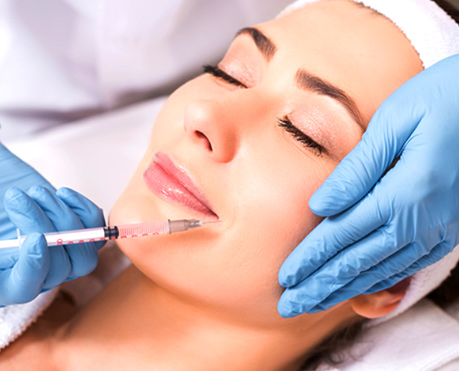
Healthy, glowing skin is not only the ideal of beauty. But it also reflects our overall well-being. In the past few years, IV glutathione therapy has received a great deal of attention. Because it is an effective and natural way to enhance skin health and achieve a radiant glow.
By delivering this powerful antioxidant directly into the bloodstream, Glutathione IV provides faster and more effective results compared to oral supplements. But what makes this treatment a true game-changer?
In this comprehensive guide, We’ll explore everything you need to know about Glutathione IV, its benefits, how it works, and why it’s the secret to glowing, healthier skin.
What is Glutathione IV?
Glutathione is a naturally occurring antioxidant found in every cell of the human body. Made from three amino acids: glutamine, cysteine, and glycine, its main function is to neutralize free radicals. Protects cells from oxidative damage. and detoxify the body Our body produces glutathione itself.
But factors such as aging, pollution, stress, poor diet, and too much alcohol can weaken the body. Leads to dull skin, inflammation, and a weakened immune system.
Why is Glutathione Important for Skin Health?
One of the reasons glutathione is so popular in skin care is its ability to brighten and even out skin tone. It works by inhibiting melanin production. This is the pigment that causes dark spots, hyperpigmentation, and uneven skin tone.
This makes it a great choice for individuals who want a fresher, more youthful appearance. Additionally, glutathione’s antioxidant properties help protect the skin from environmental damage. Reduce signs of aging such as wrinkles and fine lines.
How Does Glutathione IV Therapy Work?
IV glutathione therapy involves administering intravenous glutathione directly into the bloodstream. Unlike oral supplements, which must pass through the digestive system and may lose potency during digestion, IV administration ensures that glutathione is immediately and efficiently absorbed by the body. and provide faster and more noticeable results.
The process is very simple: A health professional administers a sterile glutathione solution through an IV drip, which helps the antioxidant circulate throughout the body. Fights oxidative stress and supports the creation of new cells.
Benefits of Glutathione IV for Skin
1. Skin Brightening and Lightening:
One of the most popular uses of Glutathione IV is for skin brightening. It reduces melanin production, giving the skin a lighter and more even tone. Over time, this can help eliminate hyperpigmentation, acne scars, and age spots.
2. Anti-Aging Properties:
Glutathione helps combat free radicals, which are responsible for causing oxidative stress and accelerating skin aging. Regular IV therapy can reduce the appearance of wrinkles, fine lines, and sagging skin, making you look youthful and refreshed.
3. Detoxification and Reduced Inflammation:
Glutathione is a powerful detoxifying agent, helping to cleanse the liver and remove harmful toxins from the body. By reducing inflammation and improving liver function, this antioxidant plays a crucial role in maintaining clear, vibrant skin.
4. Enhanced Radiance:
By neutralizing free radicals, Glutathione enhances skin radiance and overall glow. It promotes healthy cell regeneration, which leads to smoother, softer, and more luminous skin.

Additional Health Benefits of Glutathione IV
1. Boosts Immune System:
Beyond skin benefits, glutathione is essential for maintaining a strong immune system. By supporting the production of white blood cells and neutralizing harmful substances in the body, Glutathione IV therapy helps protect against illnesses and infections.
2. Increased Energy Levels:
Many individuals report feeling more energized after Glutathione IV therapy. This is because glutathione enhances mitochondrial function—the energy powerhouse of cells. Improved energy levels can lead to better physical performance and mental clarity.
3. Supports Liver Health:
Glutathione is crucial for liver detoxification. By promoting the removal of heavy metals, toxins, and free radicals, it improves liver function and reduces the risk of liver-related issues, including fatty liver disease.
4. Reduces Inflammation:
Chronic inflammation is at the root of many health problems, including skin conditions, joint pain, and cardiovascular diseases. Glutathione works as an anti-inflammatory agent, helping to reduce swelling and discomfort in the body.

Who Can Benefit from Glutathione IV Therapy?
Glutathione 4 therapy is suitable for a wide range of individuals. Especially those who want to improve the appearance of their skin and overall health. Generally recommended for:
1. People who have dark spots
2. People who want to reduce signs of aging
3. Chronic skin conditions such as acne or eczema
4. Persons exposed to environmental pollutants and toxins
5. People with low energy levels or chronic fatigue
6. Anyone who wants to boost their immune system and general well-being.
What to Expect During a Glutathione IV Treatment
Glutathione IV therapy is a safe and minimally invasive procedure. A typical session lasts anywhere between 30 to 60 minutes. During this time, you’ll be comfortably seated while the IV drip administers the solution into your bloodstream. There’s no downtime after the treatment, allowing you to return to your daily activities immediately.
Many patients notice improvements in their skin tone and overall health after just a few sessions, though the frequency and number of treatments may vary based on individual goals and health conditions. It’s essential to consult a healthcare professional for a personalized treatment plan.
Glutathione IV therapy is generally considered safe with minimal side effects. However, some individuals may experience mild discomfort at the injection site, dizziness, or nausea, which typically subside shortly after the treatment. It’s crucial to have your therapy administered by a licensed professional to minimize risks and ensure proper dosage.
Why Choose Dr. Hanan for Glutathione IV Treatment?
At Dr. Hanan Dermatology Specialty Clinic, we provide top-notch Glutathione IV therapy to enhance your skin’s glow and overall health. Here are five reasons to choose us:
1. Expert Dermatologist: Dr. Hanan’s expertise ensures safe and effective treatments with visible results.
2. Personalized Care: We tailor each treatment plan to your unique skin and health needs.
3. Safety First: Our clinic follows strict safety and hygiene protocols for all procedures.
4. Quick Results: Notice brighter, healthier skin after just a few sessions.
5. Affordable & Convenient: We offer competitive pricing and flexible appointments to fit your schedule.
Trust Dr. Hanan for glowing, radiant skin!
Final Thoughts: Is Glutathione IV Right for You?
If you are looking for a natural and effective way to improve skin health. radiance and your overall appearance Glutathione IV therapy may be the solution you are looking for. Popular with individuals who aim for its beauty and health benefits for its ability to whiten the skin. Reduce wrinkles of age Detoxify the body and increase immunity Make your choice now.
Before starting any new treatment It is important to consult with your healthcare provider to make sure Glutathione IV is the right choice for you.
FAQ’S
Glutathione IV therapy delivers a powerful antioxidant directly into the bloodstream, helping detoxify the body, reduce melanin production, and enhance the skin’s natural glow and health.
Glutathione IV therapy is generally safe when administered by a professional. Side effects are rare but may include mild irritation or temporary dizziness.
Results vary, but many individuals notice improvements in skin radiance and clarity after a few sessions, with lasting effects seen over time with regular treatments.
Table of Contents
HydraFacial Benefits: A Simple Guide
HydraFacial Benefits: A Simple Guide
Discover the benefits of HydraFacial for clearer, smoother, and glowing skin in this easy-to-read guide. A quick solution for a fresh complexion!

The HydraFacial has rapidly become one of the most sought-after skincare treatments around the world. People of all ages and skin types love this non-invasive treatment. It can refresh the skin and give an instant glow.
In this article, we will look at the many benefits of HydraFacial. We will see why it is the best choice for glowing skin. We will also explain how it is different from regular facials.
What is a HydraFacial?
HydraFacial is an advanced skincare designed to cleanse, remove dirt, and hydrate the skin using patented whirlpool technology. This unique process combines infusion, extraction, and serum in one comprehensive session, providing immediate and noticeable results.
Unlike traditional facials, which can use harsh extractions, the HydraFacial is a gentle and effective choice. Perfect for sensitive skin.
Top 8 Benefits of HydraFacial
1. Deep Cleansing and Exfoliation
One of the main benefits of the HydraFacial is that it deeply cleanses the skin. The treatment begins with a gentle exfoliation to remove dead skin cells, dirt, and oil from the skin.
This opens the pores and prepares the skin for the next treatment process. Movement is key to maintaining a smooth texture and tone, and the HydraFacial won’t cause irritation or redness.
2. Hydration and Moisture Boost
Sometimes the skin’s natural barrier weakens. This causes dryness, flaking, and irritation. HydraFacial helps prevent this by injecting hydrating serums into the skin. These serums are rich in antioxidants, peptides, and hyaluronic acid.
These ingredients go deep into the skin to restore moisture and keep it locked in. This leaves the skin soft, plump, and refreshed.
3. Immediate and Visible Results
Unlike in some facials where results can take several days, the HydraFacial provides immediate results. After just one use Customers often notice smoother skin. Brighten up with wrinkles and pores reduced Instant brightness and clarity presage a special event or important occasion.
4. Painless Extraction Process
Traditional facial skin care Often involves manual techniques. This may cause discomfort. and may cause the skin to become red or inflamed.
HydraFacial uses special vortex suction technology to remove blackheads, whiteheads, and other impurities from pores. This process is painless and does not harm the skin.
This makes this treatment ideal for individuals with sensitive skin that is prone to irritation.

5. Customizable Treatment for All Skin Types
The HydraFacial is highly customizable. This means you can customize them to meet the specific needs of different skin types and concerns. Whether it’s acne Aging skin, dark spots, or large pores There are a variety of serums to choose from to target your specific concerns.
This flexibility makes the HydraFacial suitable for everyone. From teenagers to adults
6. Reduction of Fine Lines and Wrinkles
HydraFacial offers a non-invasive solution for individuals who want to fight signs of aging. This treatment stimulates collagen production and improves skin elasticity.
It delivers powerful antioxidants and peptides directly into the skin. Over time, regular HydraFacial treatments can lead to a reduction in wrinkles, fine lines, and other signs of aging. that has decreased
7. Brightens Skin Tone and Reduces Hyperpigmentation
Sunlight, hormonal changes, and acne scars can all lead to uneven skin tone and dark spots.
The HydraFacial effectively addresses these concerns using a combination of exfoliation, soaking, and hydration. To reduce dark spots and promote a more even skin tone. The result is brighter, brighter skin with a youthful glow.
8. Improves Skin Texture and Minimizes Pores
Large pores and uneven skin texture can be difficult to tackle with an at-home skincare routine. The HydraFacial works to refine the skin’s texture. Thoroughly clean the skin and reduce the appearance of exfoliated pores.
With regular treatment, You can have smoother and more refined skin. Looks healthy and balanced
How Does HydraFacial Differ from Other Facials?
Traditional facials can provide some benefits. However, they usually do not use the multi-step approach and advanced technology found in a HydraFacial. For instance, traditional facials typically involve manual exfoliation and extraction, which can be harsh on sensitive skin.
In contrast, the HydraFacial uses gentle suction to remove impurities. It also delivers nutrient-rich serums. This offers a more complete and customizable experience.
The results of a HydraFacial are often quick and long-lasting. This makes it a popular choice for people wanting visible improvements.
Who Should Get a HydraFacial?
The beauty of the HydraFacial is that it’s designed for nearly everyone. Whether you have dry skin, oily skin, or even sensitive skin, the treatment can be tailored to address your specific concerns. It is particularly beneficial for individuals with:
1. Acne-prone skin
2. Fine lines and wrinkles
3. Hyperpigmentation
4. Large pores
5. Sun damage
6. Dry or dehydrated skin
If you’re seeking a non-invasive treatment that provides immediate, noticeable results, HydraFacial is an excellent option.

How Often Should You Get a HydraFacial?
The frequency of HydraFacial treatments depends on your skin type and goals. For those with acne or oily skin, a treatment every 2-4 weeks can help maintain clearer skin.
For individuals looking to address aging concerns, a monthly HydraFacial can help maintain youthful, glowing skin while minimizing the appearance of fine lines. Most clients opt for treatments every 4-6 weeks to maintain their results and enjoy ongoing skin benefits.
HydraFacial: A Safe and Effective Treatment
One of the most appealing aspects of the HydraFacial is its safety profile. Unlike more aggressive treatments such as chemical peels or microdermabrasion, HydraFacial does not involve any harsh chemicals or abrasive techniques.
This makes it a great option for those with sensitive or reactive skin who may not tolerate other facial treatments.
Furthermore, there is no downtime associated with a HydraFacial. You can immediately return to your normal activities after the treatment, making it an ideal lunchtime facial for those with busy schedules.
Conclusion
Looking for the best Hydrafacial treatment in OMR? Dr. Hanan, a leading dermatologist, offers expert Hydrafacial services to rejuvenate your skin. Hydrafacials are designed to deeply cleanse, exfoliate, and hydrate, leaving your skin glowing, smooth, and revitalized.
With Dr. Hanan’s expertise in dermatology and cutting-edge skincare technology, you’ll experience a personalized treatment that addresses your unique skin concerns, from fine lines to dullness. Say goodbye to dry, tired skin and hello to a radiant complexion.
Book your appointment today for a Hydrafacial that makes a difference!
For more information or to schedule a visit, contact us at +91 6381 048403 or visit www.drhanandermatologyclinic.com.
FAQ’S
A HydraFacial is a non-invasive treatment that cleanses, exfoliates, and hydrates the skin, leaving it smoother and radiant.
It deeply cleanses, improves texture, reduces pores and fine lines, and enhances hydration, suitable for all skin types.
Once a month is ideal, but your dermatologist may recommend a schedule based on your skin needs.
Table of Contents
Growth Factor Concentrate for Hair | GFC Hair Treatment Chennai
Growth Factor Concentrate for Hair | GFC Hair Treatment Chennai
Discover how Growth Factor Concentrate boosts natural hair growth and restores thinning hair. Safe, effective, and expert-approved.

Hair loss affects millions of people around the world. As a result, there is a demand for effective treatments that deliver real results.
A promising innovation in hair restoration is Growth Factor Concentrate (GFC), a scientifically backed solution designed to combat hair loss and promote healthy regrowth.
GFC offers a revolutionary approach to Hair loss treatment that uses natural growth factors from the patient’s own body. In this article, It offers a non-surgical and minimally invasive option.
We will delve into the science behind Growth Factor Concentrate, and its benefits. and what to expect from treatment.
What is Growth Factor Concentrate (GFC)?
Growth factor concentrate is a potent mixture of growth factors and proteins that play an important role in cell growth. Proliferation and maintenance. These proteins are found in abundance in our blood plasma.
When concentrated, it stimulates the hair follicles and increases the regeneration process. This advanced treatment involves isolating growth factors from a small sample of the patient’s blood.
Focus your attention on the scalp. and injected into the scalp to stimulate hair growth. Unlike traditional hair restoration methods, GFC focuses on natural regeneration.
It provides a holistic solution that works with your body’s biology. It is a highly effective method for those who want to restore their hair without surgery or harsh medications.
How Does Growth Factor Concentrate Work?
The growth factors used in this treatment act as messengers, sending signals to hair follicles to restart their growth cycle. Here’s how it works in three simple steps:
1. Blood Collection: A small amount of the patient’s blood is drawn, typically from the arm.
2. Processing: The blood is processed to isolate and concentrate the growth factors.
3. Injection: The concentrated growth factors are injected into the scalp at targeted areas where hair thinning or hair loss is occurring.

This process enhances the activity of hair follicles in their anagen phase (the growth phase of the hair cycle), encouraging the regeneration of new, thicker, and healthier hair strands.
Benefits of concentrated Growth Factor for hair restoration
Intensive therapy with growth factors stands out because of its unique and natural method of hair restoration. Some of the main benefits of this treatment are as follows.
1. Non-surgical solution
Unlike hair transplants or other invasive procedures, GFC does not require surgery. This makes it the preferred choice for individuals looking for a less invasive method. The treatment is quick. with only slight discomfort and requires little or no downtime. This makes it an ideal choice for busy individuals.
2. Use the body's healing power
A key advantage of GFC is that it uses growth factors from the patient’s own body. This reduces the risk of allergic reactions or side effects often associated with synthetic products or medicines.
3. Stimulates natural hair growth
GFC stimulates dormant hair follicles. and promotes the body’s natural healing process Stimulates hair follicles to create hair. This treatment not only stops hair loss. But it also stimulates the growth of new hair. This causes the patient’s hair to become fuller and denser over time.
4. Safe and proven results
With years of research supporting its effectiveness, Growth Factor Concentrate has been proven to safely treat hair loss. Studies have found significant improvements in hair density, thickness, and volume. After multiple GFC treatments, results may vary from person to person. However, most patients report noticeable changes within a few months of treatment.
5. Adaptive treatment
Each GFC treatment plan will vary based on the patient’s specific needs and hair condition, number of sessions, growth factor concentration, and hair growth factors. The injection site is optimized to ensure the best results.
Who is a Good Candidate for Growth Factor Concentrate?
Growth Factor Concentrate therapy is ideal for individuals experiencing early to moderate hair thinning. It is particularly effective for those with conditions like androgenetic alopecia, also known as male-pattern or female-pattern baldness, which is the most common form of hair loss. However, it may also benefit those who have experienced hair thinning due to stress, illness, or age-related factors.
This treatment is not recommended for individuals with severe hair loss or completely bald areas, as the results may be limited in such cases. It’s best suited for those whose hair follicles are still active, even if they are producing thinner hair.
What to Expect During the Procedure
The GFC treatment is relatively quick and straightforward, with most sessions taking less than an hour. Here’s what you can expect:
1. Consultation: A thorough consultation is conducted to determine the extent of hair loss and whether you’re a suitable candidate for the procedure. This may involve examining the scalp and discussing your medical history.
2. Preparation: On the day of the treatment, a small amount of blood is drawn from your arm, which is then processed to separate the growth factors.
3. Injections: Using a fine needle, the concentrated growth factors are injected into areas of the scalp that require stimulation. The injections are targeted to maximize results, and most patients report only mild discomfort during this stage.
4. Aftercare: There is minimal downtime associated with GFC therapy. Patients can resume normal activities shortly after the procedure. Some may experience mild swelling or redness at the injection sites, but this typically subsides within a few hours.
Results and maintenance
Growth Factor Concentrate is a single use. For best results, Most patients need to have their treatments spaced out a few weeks apart. In general, after 3-4 months the results will start to become noticeable and there will be continued improvement over the next year. Maintenance can be recommended every 6-12 months to maintain hair growth.
The results of GFC treatment depend on several factors, such as the patient’s age. The extent of hair loss and how well they respond to treatment for best results. It is necessary to follow the aftercare instructions given by your specialist and follow all instructions. Session increased
How Does GFC Compare to Other Hair Restoration Treatments?
Compared to other treatments such as PRP (Platelet-Rich Plasma), minoxidil, or hair transplants, Growth Factor Concentrate offers several distinct advantages:
a. Higher Concentration of Growth Factors: GFC isolates and concentrates growth factors to a much higher degree than PRP, offering potentially better results.
b. No Need for Daily Maintenance: Unlike topical solutions like minoxidil, GFC does not require daily application, making it more convenient for patients.
c. Non-Surgical: Unlike hair transplants, GFC is a non-invasive procedure that does not involve surgical removal or implantation of hair follicles.
However, the best treatment plan varies from individual to individual, and combining GFC with other treatments may be recommended for some patients to achieve optimal results.
Who is Dr. R. Amin Hanan ?
Dr. R. Amin Hanan is the best Dermatologist, Cosmetologist & Hair Transplant Surgeon practicing in Chennai with over a decade of experience. She is also a fellowship holder (FFAM) in AESTHETIC MEDICINE, HAIR TRANSPLANT, and is the founder of Hanan Dermatology Speciality Clinic.

For more information on Growth Factor Concentrate Therapy in Chennai, visit Hanan Dermatology Speciality Clinic at OMR or contact us at +91 6381048403 or simply fill in your name and number & one of our team members will get in touch with you soon.
Our team of experts along with Dr. R. Amin Hanan MBBS., MD. (DVL), FFAM– Best Dermatologist, Cosmetologist & Hair Transplant Surgeon, will help you understand your problem and guide you through every stage of your treatment.
Conclusion
Growth Factor Concentrate represents an exciting advancement in the field of hair restoration, offering a safe, natural, and effective way to stimulate hair growth.
By harnessing the power of your own body’s growth factors, GFC provides a non-surgical solution to hair thinning that delivers lasting, visible results.
Whether you are in the early stages of hair loss or looking to enhance the density of your hair, this innovative treatment may be the solution you’ve been searching for.
FAQ’S
GFC Hair Treatment uses growth factor concentrate to stimulate hair regrowth and improve scalp health.
Each session typically lasts 30-60 minutes, with visible results after 3-4 sessions.
Yes, it’s a non-invasive and safe procedure with minimal side effects.
Table of Contents
Best Laser Hair Removal in Chennai
Best Laser Hair Removal in Chennai
Discover the top laser hair removal services in Chennai for flawless, smooth skin. Safe, effective treatments tailored to your needs.

If you’re searching for the best laser hair removal services in Chennai, you’re not alone. Laser hair removal is an increasingly popular choice for individuals seeking a long-term solution to unwanted hair. With the city offering an array of clinics providing advanced treatments, it’s crucial to choose the best to ensure safety, effectiveness, and satisfaction.
What is Laser Hair Removal?
Laser hair removal is a non-invasive procedure that uses a concentrated beam of light (laser) to target and destroy hair follicles. Pigments in the hair follicles absorb light, resulting in inhibiting future hair growth.
This treatment can lead to permanent hair reduction multiple times. This makes it a convenient alternative for those who are tired of waxing, shaving, and other temporary hair removal methods.
How Does Laser Hair Removal Work?
The laser emits a specific wavelength of light that is absorbed by the melanin (pigment) in the hair. This process heats the hair shaft and root, effectively damaging the follicle without harming the surrounding skin.
Once the follicle is damaged, it is less likely to produce new hair. Over time, the treated area becomes smooth and hair-free.
Why Choose Laser Hair Removal?
Laser hair removal has several advantages over traditional hair removal methods:
a. Long-term results: after completing the recommended steps Most people will experience permanent hair loss.
b. Precision: The laser can selectively target dark, coarse hairs. leaving the surrounding skin uninjured
c. Speed: Each laser pulse takes a fraction of a second and can treat multiple hairs at once.
d. Minimal Discomfort: Modern laser technology incorporates cooling systems. This will ensure that the procedure is as comfortable as possible.
Is Laser Hair Removal Safe?
Yes, laser hair removal is a safe procedure when performed by certified professionals using FDA-approved equipment. Most hospitals in Chennai follow strict safety standards. At the same time, this treatment is given to reduce the risks associated with the procedure.
However, it is important to note that Laser hair removal works best on individuals with tan skin and contrasting dark hair. Darker skin or lighter hair may not have the same results and may require a specialized laser system for effective treatment.
What to Expect During a Laser Hair Removal Session
Before receiving treatment The clinic will provide a consultation to assess your skin condition, hair color, and thickness. This step is necessary to determine the most appropriate laser technology for your needs.
1. Preparation: The area to be treated will be shaved and cleaned. Avoid waxing or plucking hair in the treated area in the week leading up to your session. This is because the laser must be aimed at the hair follicle.
2. Protective Equipment: You and the technician will wear protective goggles to protect your eyes from the laser’s intense light.
3. Treatment: The technician will use a handheld laser device to target the hair follicles. You may feel a slight stinging or stinging sensation between the laser pulses.
4. Post-Treatment Care: You may have some redness or swelling after your treatment. This usually disappears within a few hours. Using soothing creams and avoiding the sun will help your skin heal faster.

Most individuals require 6 to 8 treatments over approximately 4 to 6 weeks to achieve optimal results. Because the hair will grow long and dizzy, certain areas of the body may need to be touched more frequently. It depends on the nature of hair growth.
Benefits of Laser Hair Removal in Chennai
Chennai has many clinics that offer world-class laser hair removal services. Here are some reasons why Chennai is a popular destination for this treatment.
Advanced Technology: Major Best Hospitals In Chennai use state-of-the-art laser systems such as Alexandrite Diode which is suitable for a variety of skin tones and hair types
Certified Dermatologists: Many of the city’s top hospitals have board-certified dermatologists and experienced technicians who ensure the highest standards of care.
Affordable Pricing: Compared to other cities The prices of laser hair removal in Chennai are very competitive. They are making it more accessible to a wider audience without compromising on quality.
Convenient location: The city has several hospitals located in key areas. Making it easy for people across Chennai to access top-notch treatments.
Choosing the Right Clinic for Laser Hair Removal in Chennai
When selecting a clinic, consider the following factors:
a. Expertise: Ensure the clinic has certified best dermatologists or experienced laser technicians with a strong track record.
b. Equipment: The best clinics use the latest FDA-approved laser machines to ensure safe and effective treatments for all skin types.
c. Client Reviews: Look for testimonials and reviews from previous clients to get an idea of the clinic’s reputation and service quality.
d. Hygiene Standards: Choose a clinic that follows strict hygiene protocols to ensure a safe and comfortable experience.
e. Post-Treatment Support: A good clinic will provide aftercare instructions and follow-up sessions to ensure the best possible outcome.
Top Clinics for Laser Hair Removal in Chennai
1. Dr. Hanan Dermatology Speciality Clinic – Located on OMR Road, this clinic is known for offering advanced laser hair removal treatments tailored to individual skin types and needs. With experienced female dermatologist in chennai and cutting-edge technology, this clinic is a top choice for many seeking permanent hair removal solutions.
2. Oliva Skin & Hair Clinic – One of the leading names in dermatology, Oliva offers customized laser hair removal treatments with a focus on safety and efficacy.
3. Vcare Dermatology Clinic – Known for its affordable pricing and comprehensive dermatology services, Vcare uses the latest laser technology to deliver effective results.

Cost of Laser Hair Removal in Chennai
The cost of laser hair removal varies depending on several factors. including the size of the treatment area Number of sessions required Hospital price structure And an average session can range from Rs 2,000 to Rs 10,000 per session. Depends on the body part and Technology used.
Although the upfront cost of laser hair removal may seem high, It is a worthwhile solution in the long run because you don’t need to spend money on creams, waxes, or other temporary hair removal methods.
Conclusion
Laser hair removal is an excellent option for individuals looking to achieve smooth, hair-free skin without the hassle of frequent maintenance. With numerous clinics in Chennai offering advanced treatments, it’s essential to choose the right provider to ensure safe and effective results.
If you’re considering laser hair removal, be sure to consult with an experienced dermatologist who can guide you through the process and help you achieve the best possible outcome.
Vist us at our Best skin clinic in chennai | Dr. Hanan Dermatology Speciality Clinic
FAQS
Laser hair removal significantly reduces hair growth, but it may not be completely permanent. Multiple sessions are usually required for long-lasting results, and maintenance sessions may be needed over time.
The number of sessions varies depending on factors like hair type, skin tone, and the area being treated. On average, 6 to 8 sessions are recommended for optimal results.
Yes, modern laser technology is designed to safely treat various skin tones. However, it's important to consult with a qualified dermatologist to determine the most suitable laser for your skin type.
Table of Contents
Top 5 Best Skin Clinics in Chennai From Best Dermatologist 2024
Top 5 Best Skin Clinics in Chennai From Best Dermatologist 2024
Find the best skin clinic in Chennai with our top 5 picks, offering cutting-edge dermatology treatments for radiant, healthy skin.

Top 5 Best Skin Clinics in Chennai From Best Dermatologist 2024
Finding good skin care products This can be a challenge in a bustling city like Chennai. Many skin clinics offer a wide range of services, from cosmetic procedures to treatments.
Choosing the right clinic can make a world of difference. Here we have compiled a list of the top 5 skin clinics in Chennai that are known for their state-of-the-art treatments.
Why is Skin Care Important?
Taking care of your skin is vital for your health, appearance, and long-term prevention of skin issues.
Why Skin Care Matters:
1. Health: Healthy skin is a protective barrier, preventing infections and shielding against harmful UV rays. Regular sunscreen use lowers the risk of skin cancer.
2. Appearance: A good skincare routine keeps your skin youthful, promoting clearer, glowing skin by removing dead cells and encouraging regeneration.
3. Prevention: Consistent care prevents signs of aging and manages existing issues like acne or dryness. Skin care is essential for everyone, not just those with sensitive skin.
In short, proper skin care safeguards your health, boosts confidence, and prevents future problems.
Choosing the Best Skin Care Clinic in Chennai 2024
Not sure how to pick the best skin clinic near me? Look for hospitals with Best dermatologist offering key services like consultations, medical treatments, and cosmetic procedures.
Your skin needs specialized care, and seeking professional help can address issues like rashes, wrinkles, and more serious conditions like skin cancer.
Benefits of Visiting a Skin Specialist
1. Accurate Diagnosis: Dermatologists provide expert assessments of skin conditions.
2. Healthier Skin: Regular visits lead to clearer, more youthful skin.
3. Exclusive Treatments: Access to high-quality products not available in stores.
4. Customized Care: Personalized treatment plans for every skin type.
How to Choose the Best Skin Clinic
1. Check Certifications: Ensure the facility and specialists are licensed.
2. Experience Matters: Opt for seasoned professionals.
3. Read Reviews: Patient feedback provides insight.
4. Cost & Communication: Compare prices and make sure the specialist listens and explains clearly.
Top 5 Best Skin Clinics In Chennai - Get the Best Skin Specialist
1. Dr. Hanan’s Dermatology Speciality Clinic, OMR Road
Dr. Hanan’s Dermatology Speciality Clinic, located in the heart of Chennai on OMR Road, is a premier destination for advanced skin treatments. The clinic is led by Dr. Hanan, a board-certified dermatologist with years of experience in treating a variety of skin conditions.
What sets Dr. Hanan’s clinic apart is the integration of cutting-edge technology with a compassionate, patient-centric approach. The clinic offers a wide range of services, including:
a. Advanced Acne Treatment: Whether you’re dealing with stubborn acne or scars, this clinic provides tailored solutions, including chemical peels, laser therapy, and topical treatments.
b. Anti-Aging Procedures: For those looking to rejuvenate their skin, Dr. Hanan’s clinic offers Botox, fillers, and laser resurfacing to reduce wrinkles and improve skin texture.
c. Psoriasis & Eczema Care: Specialized treatments for chronic skin conditions like psoriasis and eczema are administered with the latest medications and therapies, ensuring long-lasting relief.
d. Laser Treatments: For pigmentation, unwanted hair, and acne scars, the clinic offers state-of-the-art laser technology to deliver precise results.
The clinic is known for its friendly staff, timely appointments, and personalized care plans that prioritize the patient’s unique needs.

Why Choose Dr. Hanan’s Dermatology Speciality Clinic?
1. Expertise: Led by Dr. Hanan, whose credentials and experience speak for themselves.
2. State-of-the-art equipment: The clinic is equipped with modern tools and machines that ensure precise, effective treatments.
3. Comprehensive Services: From medical to cosmetic dermatology, everything is offered under one roof.
2. Apollo Cosmetic Clinics, Chennai
Apollo Cosmetic Clinics is a famous name in the field of healthcare. And their skin care services are top-notch. Situated in different parts of Chennai, this clinic is an option for those looking for beauty and skin solutions.
What makes Apollo Cosmetic Clinics one of the Best of all, it is dedicated to clinical excellence and patient safety.
a. Cosmetic Dermatology: Specializing in Botox dermal fillers Skin tightening treatments and anti-aging treatments To make the patient look youthful
b. Medical Dermatology: From acne and rosacea treatments to comprehensive eczema and psoriasis care, Apollo guarantees effective results for every patient.
c. Laser Treatment: The clinic offers laser treatment for hair removal. pigmentation and reduce scars with top-notch technology Apollo Cosmetic Clinics is for those seeking professional care in luxury and convenience.

Why Choose Apollo Cosmetic Clinics?
1. Trust: Apollo is a trusted name in Indian healthcare. By offering standard treatment methods
2. Experienced Doctors: The clinic has a team of skilled dermatologists and beauty experts.
3. Convenient location: There are many branches all over Chennai. Therefore, it is convenient for patients.
3. Kaya Skin Clinic
Kaya Skin Clinic is a household name in India. Known for offering customized skin care products as per individual needs, Kaya has several branches in Chennai. and is famous for providing leading skin and beauty health solutions.
a. Personalized Skin Care: The clinic offers treatment for a wide range of acne, pigmentation, and uneven skin tone.
b. Facial rejuvenation: Anti-aging treatments such as dermal fillers, Botox, and radiofrequency therapy are offered. To restore youthful skin Advanced
c. Laser Solutions: Kaya specializes in laser treatments for hair removal. Reduce acne scars And brighten the skin tone using modern technology that has been approved by the FDA.
With experienced dermatologists and therapists, Kaya offers skin care solutions that not only treat but also enhance the natural glow of the skin.

Why Choose Kaya Skin Clinic?
1. Customization: Treatments are designed according to each person’s skin type and needs.
2. Professionalism: The clinic has a team of well-trained dermatologists who are focused on patient satisfaction.
3. Range of Services: Kaya offers a comprehensive range of skin, hair, and beauty solutions.
4. Dr. Batra’s Skin Clinic
Dr. Batra’s Skin Clinic is a well-recognized name in homeopathy-based dermatology. With a specialized focus on treating skin conditions using natural remedies, the clinic has garnered a loyal patient base in Chennai.
a. Overall Approach: Dr. Batra combines natural remedies with modern technology to treat conditions such as acne, eczema, and psoriasis.
b. Safe Treatment: All treatments are natural and non-invasive. Ideal for individuals who are looking for a gentle alternative to traditional methods.
c. Hair and Skin Health: In addition to skin conditions, Dr. Batra specializes in treating hair loss and other concerns. Related to hair using homeopathic treatment.
This clinic is an excellent choice for those seeking a holistic and long-term solution to their skin problems.

Why Choose Dr. Batra’s Skin Clinic?
1. Natural Treatment Options: The clinic provides non-invasive, side-effect-free treatments.
2. Personalized Plans: Each patient gets a customized treatment plan.
3. Trusted Brand: With decades of experience, Dr. Batra has a proven track record of successful treatments.
5. Vcare Skin and Hair Clinic
Vcare Skin and Hair Clinic is one of the most reputed clinics in Chennai for both skin and hair care solutions. Known for its scientifically backed treatments, Vcare offers an array of services that cater to both cosmetic and medical dermatology needs.
a. Skin Treatments: From treating pigmentation and acne to advanced anti-aging procedures, Vcare offers a wide range of services to enhance skin health and appearance.
b. Hair Treatments: Vcare is particularly famous for its hair care treatments, offering therapies for hair loss, thinning, and dandruff.
c. Technologically Advanced: The clinic uses the latest technologies, such as Platelet-Rich Plasma (PRP) therapy for hair and skin rejuvenation, ensuring efficient and long-lasting results.
Vcare’s skilled dermatologists and therapists ensure that every patient receives quality care and personalized treatment plans.

Why Choose Vcare Skin and Hair Clinic?
1. Specialist Dermatologists: A team of dermatologists who specialize in skin and hair treatments.
2. Advanced Technology: The clinic uses the latest techniques and equipment to achieve the best results.
3. Wide range of services: From simple skincare to advanced hair restoration treatments, Vcare provides holistic care.
Final Thoughts
Whether you’re dealing with a stubborn skin condition or simply want to improve your skin’s overall appearance, Chennai offers some of the best skin care clinics in OMR with experienced dermatologists and cutting-edge treatments.
By choosing the right skin doctor in Chennai, you can ensure that your skin receives the care and attention it deserves.
FAQS
They provide treatments like acne care, scar removal, anti-aging, and skin condition management.
You can book online, by phone, or visit the clinic directly.
Fees vary, but many clinics offer affordable options depending on the dermatologist's expertise.
Table of Contents
What Is Psoriasis and How to Get Rid of It
What Is Psoriasis and How to Get Rid of It
Learn what psoriasis is and discover simple tips on how to manage and reduce symptoms for smoother skin. Read now for relief!

Psoriasis is a long-term skin condition that affects many people worldwide. It’s an autoimmune disease that causes skin cells to grow too quickly, forming thick, scaly patches.
These patches, or plaques, can be red, inflamed, and painful. They often appear on the wrists, knees, scalp, and lower back but can be anywhere on the body.
This article explains what psoriasis is and looks at treatments to help manage its symptoms.
What causes psoriasis?
Psoriasis occurs when the immune system mistakenly attacks healthy skin cells, causing new skin cells to form quickly.
Normally, skin cells grow and shed every 28 to 30 days, but in psoriasis this process can take only 3 to 4 days. The wrinkles are formed by the rapid accumulation of skin cells.
Although the exact causes of psoriasis are not fully understood, several factors can trigger or exacerbate the condition:
- Heredity: Psoriasis tends to run in families. If one or both of your parents have psoriasis, you are more likely to develop it.
- Immune system dysfunction: Since psoriasis is an autoimmune disease, the immune system plays an important role. Abnormal immune responses lead to inflammation and rapid skin cell turnover.
- Environmental triggers: Stress, skin injuries, infections (such as strep throat), and certain medications can cause flare-ups.
- Lifestyle factors: Smoking, excessive alcohol consumption and obesity can aggravate symptoms.

Types of Psoriasis
There are several types of psoriasis, each with its own characteristics:
1. Plaque Psoriasis: The most common form, characterized by raised, red patches covered with silvery scales. These plaques can appear anywhere on the body.
2. Guttate Psoriasis: This type appears as small, dot-like lesions, usually triggered by bacterial infections like strep throat.
3. Inverse Psoriasis: Found in body folds such as the armpits, groin, and under the breasts, this type appears as smooth, red patches that worsen with friction and sweating.
4. Pustular Psoriasis: Characterized by white pustules (blisters of non-infectious pus) surrounded by red skin. It can appear on specific areas, such as the hands and feet, or cover the entire body.
5. Erythrodermic Psoriasis: A rare but severe form of psoriasis that causes widespread redness, scaling, and pain across the body. It requires immediate medical attention.

Symptoms of psoriasis
Psoriasis symptoms can vary depending on the type and severity. Common symptoms include:
- Red patches of skin covered with thick silver scales
- Dry and cracked skin that can cause bleeding
- Itching, burning, or soreness
- Thickened or ridged nails
- Stiff and swollen joints (in cases of psoriatic arthritis)
Symptoms range from mild, affecting only a small area of the skin, to severe, involving large areas, and significantly affecting quality of life.

How to Get Rid of Psoriasis: Treatment Options
Several treatments are available to help manage the symptoms and reduce flare-ups. Treatment typically depends on the type and severity of the condition, and it may involve a combination of therapies.
1. Topical treatment
Topical treatments are often the first line of defense against mild to moderate psoriasis. These products are applied directly to the skin and can help reduce inflammation and slow the growth of skin cells.
- Corticosteroids: These anti-inflammatory medications and ointments are commonly used to treat mild forms of psoriasis. They reduce redness and inflammation and help relieve pain.
- Vitamin D analogs: These synthetic forms of vitamin D, such as calcipotriene, help slow the growth of skin cells.
- Retinoids: Topical retinoids, such as whole wheat germ, help exfoliate dead skin cells and reduce inflammation.
- Charcoal tar: This treatment helps reduce grease, pain and inflammation. It is also available in shampoos, creams and oils.
- Moisturizer: While not really a cure, it is essential by keeping the skin well moisturized to prevent dryness and cracking.

2. Phototherapy (Light Therapy)
Phototherapy involves exposing the skin to controlled amounts of ultraviolet (UV) light. This treatment can help slow the growth of skin cells and reduce inflammation.
- UVB Phototherapy: This is the most common form of light therapy, using UVB light to treat affected areas. It can be administered in a doctor’s office or with a home phototherapy unit.
- PUVA Therapy: This involves combining a medication called psoralen with UVA light. The psoralen makes the skin more sensitive to light, enhancing the effectiveness of the treatment.
- Excimer Laser: This laser treatment delivers high-intensity UVB light to specific areas of the skin, targeting plaques without affecting surrounding healthy skin.
3. Systemic Medications
For moderate to severe psoriasis, systemic medications may be prescribed when other treatments are ineffective. These can be taken orally or injected and work throughout the body.
- Biologics: These drugs, such as adalimumab, etanercept and infliximab, target specific aspects of the immune system to reduce inflammation and slow the progression of psoriasis
- Methotrexate: This drug suppresses the immune system and reduces skin cell production and inflammation.
- Cyclosporine: Another immunomodulatory drug, cyclosporine, can be effective in severe cases but is often used for short periods of time because of possible side effects
- Oral retinoids: These are related to vitamin A and can help reduce skin cell production. Acitretin is commonly used in severe psoriasis.

4. Lifestyle and home remedies
In addition to medication, lifestyle changes and home remedies play an important role in the management of psoriasis:
- Moisturize Regularly: Fresh water can dehydrate your skin and cause dry, itchy skin.
- Manage stress: Stress is a well-known trigger for psoriasis flares, so incorporating relaxation techniques such as meditation, yoga and deep breathing can be beneficial
- A healthy diet: Eating a well-balanced diet rich in antioxidant foods like fruits, vegetables and omega-3 fatty acids can help reduce inflammation
- Avoid Triggers: Identify and avoid specific triggers that can worsen your symptoms, such as smoking, alcohol abuse, and certain foods.
Why Choose Dr. Hanan Dermatology Specialty Clinic for Best Psoriasis Treatment in Chennai ?
Expertise and Experience
Dr. Hanan is a Best skin doctor in Chennai with years of experience treating psoriasis. Her team is skilled in handling complex cases and improving patients’ quality of life with personalized care.
Cutting-Edge Treatments
We offer the latest psoriasis treatments, including:
- Topical Treatments: Corticosteroids, vitamin D analogues, and retinoids.
- Phototherapy: Excimer laser treatments.
- Systemic Medications: Oral or injectable drugs for severe cases.
- Biologic Therapies: Advanced treatments targeting the immune system.
Personalized Treatment Plans
We create custom treatment plans based on your specific needs, considering the severity of your condition and overall health.
Holistic Approach
We focus on treating the whole person, including lifestyle changes, nutrition, and stress management, to help manage and control psoriasis effectively.
The Psoriasis Treatment Process
1. Comprehensive Consultation: We assess your medical history, symptoms, and previous treatments.
2. Customized Treatment Plan: Tailored to alleviate symptoms and prevent flare-ups.
3. Ongoing Monitoring and Support: Continuous care to ensure effective management and improvement.
Patient Success Stories
Our patients have experienced significant improvements. Many have shared how our advanced treatments and personalized care have transformed their lives.
Schedule Your Consultation Today
For the best psoriasis treatment in Chennai, visit Dr. Hanan Dermatology Specialty Clinic. Schedule your consultation now and start your journey towards clearer, more comfortable skin.
Conclusion
Psoriasis is a complex and often frustrating condition, but with the right treatment plan and lifestyle adjustments, it can be managed effectively.
Whether through topical treatments, phototherapy, systemic medications, or home remedies, there are many ways to reduce the symptoms of psoriasis and improve your quality of life.
FAQ’s
The most common form of plaque psoriasis produces raised patchy areas of skin. The color of the lines depends on your skin tone and can be yellow, gray or yellow. The movement appears as white, silver or gray.
Psoriasis is a long-term condition that doesn't have a cure, but treatment can help reduce your symptoms.
Flare-ups can last anywhere from a few weeks to a few months. Treatment can help you recover faster. When your symptoms disappear, your psoriasis is in remission. Remission can last for months or even years.
Table of Contents
Best Skincare Products for Teens: Easy Guide
Best Teenage Skin Care Products: Easy Guide
Discover the good skincare products for teens. This easy guide helps teens achieve clear, glowing skin without any hassle. Start now!

Ever had the feeling when you were a teenager that your skin had a mind of its own, and it wasn’t after what you wanted? Adolescence is a time of change with body and skin changes because hormones and growth.
Don’t worry; everyone has tough times. Normal to face challenges and difficulties. You’re not alone in this. Want a little friendly help, we’ve created an expert-curated skincare guide just for you.
Read on as we help navigate teenage skin problems and create your teenage skincare routine and best Skincare Products for Teenagers.
Why is Teen skin important ?
Teenagers have unique skin challenges such as acne, oily skin, and sweating. Important to use the right skin care products to combat these issues and take care of their changing skin.
Proper skin care routine helps teens manage skin problems and develop habits for healthy skin in the future.
It’s important to make good choices and take care of your skin with a routine that will help you in the long run.
How Teens Skin Differs from Adult Skin
Teen skin is different from adult skin because of the changes happening during puberty. Here’s why teenagers need a skincare routine that’s different from adults:
1. Hormonal Changes: During puberty, the body produces more hormones, which increases oil production. This can lead to more acne and oily skin.
2. Increased Oil Production: Teen skin often produces more sebum (oil) than adult skin, making it more prone to acne and shine.
3. Faster Cell Turnover: Teen skin heals more quickly from breakouts, but this can also mean more frequent acne. Products designed for teens help manage this.
4. Sensitivity: Hormonal changes can make teen skin more sensitive. Using products meant for adults might be too harsh and could cause irritation.
Teens should use skincare routines designed for their needs, like managing oil and acne, instead of adult products that may not work for them.

Understanding Teen Skin
Before diving into recommendations, it’s important to understand why teenage skin is different. During adolescence, the body produces more cholesterol (oil), which can clog pores and cause acne.
Cleansers: Start Here
Gentle Foaming Cleansers: Clean your face twice a day to remove dirt and oil without drying out your skin.
a. Epirich PE foaming cleanser: Good for normal to oily skin; helps keep skin hydrated.
b. Tabula rasa face cleanser: Contains salicylic acid to fight acne.
Micellar Water: Great for sensitive skin; cleanses without harsh scrubbing.
a. D wash face wash: Gently cleans and soothes skin.

Moisturizers: Stay Hydrated
Oil-Free Moisturizers: Even oily skin needs moisture. Choose products that won’t clog pores.
a. Akosma advanced skin repair moisturiser: Controls shine and reduces pores.
b. Raindew moisturiser: Includes SPF 30 for sun protection.
Hydrating Gel-Creams: Light and hydrating for combination or normal skin.
a. Neutrogena Hydro Boost Water Gel: Keeps skin soft and hydrated without feeling greasy.
b. Excela rich moisturiser: Deeply hydrating cream, ideal for very dry skin with nourishing ingredients like hyaluronic acid and ceramides.
Acne Treatments: Spot Solutions
Spot Treatments: Target specific pimples without drying out the whole face.
a. Clean & Clear Advantage Acne Spot Treatment: Reduces pimple size quickly.
b. Mario Badescu Drying Lotion: Dries out blemishes overnight.
All-Over Treatments: For more severe acne.
a. Proactiv Solution 3-Step System: Combines cleanser, toner, and treatment.
b. The Ordinary Niacinamide 10% + Zinc 1%: Reduces blemishes and balances oil.
Sunscreens: Protect Your Skin
Lightweight Sunscreens: Protect against UV rays and prevent breakouts.
a. Solreva XL sunscreen: Lightweight and good for acne-prone skin.
b. Nubase facial gel: Oil-free and protects against sun damage.
Tinted Sunscreens: Offers sun protection and a bit of coverage.
a. Rivela tinted sunscreen: Provides color and sun protection.
b. Australian Gold Botanical Tinted Face Sunscreen SPF 50: Natural ingredients and matte finish.
Face Masks: Weekly Care
Clay Masks: Remove impurities and control oil.
a. Aztec Secret Indian Healing Clay: Deep-cleans with natural clay.
b.Origins Clear Improvement Active Charcoal Mask: Draws out impurities with charcoal.
Hydrating Masks: Add extra moisture and soothe irritated skin.
a. Laneige Water Sleeping Mask: Hydrates while you sleep.
Simple Skincare Routine for Teenage Girls
Taking care of your skin as a teenager can be tricky because of the changes in your body. Here’s an easy skincare routine to keep your skin healthy and clear.
1. Cleanse: Starting and ending your day
- Morning and night: Wash your face twice a day to remove dirt and oil.
- Use a gentle cleanser: Choose a gentle cleanser that does not damage your skin.
- Example: Cetaphil gentle cleanser.
2. Toning: Balance Your Skin
- Reasons for use: Toner helps to balance your skin and tighten pores.
- Choose Alcohol-Free: Choose an alcohol-free toner to avoid drying out your skin.
- Example: Thayers Witch Hazel Toner.
3. Moisturizing: Keep Your Skin Moisturized
- Day and night: Moisturize your skin daily to keep your skin soft, even if it is oily.
- Oil-Free Moisturizer: Use a light, oil-free moisturizer.
- Example: Neutrogena Hydro Boost Water Gel.

4. Sun protection: Protect your skin
- Daily SPF: Always wear sunscreen, even on cloudy days.
- Choose SPF 30 or higher: Use sunscreen to protect against UVA and UVB rays.
5. Targeted treatment: Focus on problem areas
- Acne Treatments: Use a spot treatment with salicylic acid for acne.
- Example: Acne spot treatment Clean and clear.
- Exfoliate weekly: Gently scrub skin once or twice a week.
- Example: Paula’s Choice 2% BHA Exfoliant.
6. Healthy Habits: Glow from Within
- Food and Water: Eat fruits and vegetables and drink plenty of water.
- Sleep and Stress: Get 8 hours of sleep and manage stress to prevent breakdown.
Skincare Routine for Teenage Boys
Teenage boys often deal with oily skin, acne, and sensitivity due to hormonal changes. Here’s an easy skincare guide to keep your skin clear and healthy.
1. Cleansing: Start with a Clean Slate
- Daily Cleansing: Wash your face twice a day to remove excess oil and dirt.
- Foaming Cleaner: Choose a gentle, oil-free cleaner.
- Example: Neutrogena Male Invigorating Facial Wash.
Tips:
- Use warm water: Hot water can be too hard.
- Avoid bar soaps: It can dry out your skin.
2. Exfoliating: Remove Dead Skin
- Weekly exfoliation: Use the scrub 1-2 times a week to remove dead skin cells.
- Gentle scrub: Choose a scrub with salicylic acid or benzoyl peroxide.
- Example: Kiehl’s Facial Fuel Energizing Scrub.
Tips:
- Avoid over-exfoliating, as this can lead to irritation and increased oil production.
- Apply the scrub gently, using circular motions to avoid damaging the skin.

3. Moisturizing: Keeping the Skin Hydrated
- Regular Hydration: Even oily skin needs hydration. Use a light, non-greasy container.
- Oil-Free Moisturizer: Choose a non-comedogenic, oil-free moisturizer.
Tips:
- Apply moisturizer for teens immediately after cleansing to lock in moisture.
- For those with dry skin, a slightly richer formula may be necessary.
4. Sun Protection: Essential for Healthy Skin
- Regular Daily Sunscreen: Protect your skin from UV damage.
- Broad-spectrum SPF: Use a sunscreen with at least SPF 30.
Tips:
- Apply sunscreen as the last step in your morning skincare routine, 15 minutes before going outside.
- Reapply every two hours if you’re active outdoors or sweating.
5. Targeted Treatments: Addressing Specific Skin Issues
- Spot treatments: For acne, use products that contain salicylic acid.
- Example: Clean & Clear Advantage acne treatment.
- Local treatment: Use treatment locally for diffuse abscesses.
Tips:
- Avoid using too many acne products at once, as this can lead to irritation.
- Start with one product and see how your skin responds before adding more treatments.
6. Face Masks: Weekly Care
Clay Masks: Use once a week to control oil and clear pores.
- Example: Aztec Secret Indian Healing Clay.
Tips:
- Follow the mask instructions.
- Avoid using masks too often to prevent drying out your skin.
Conclusion
Dr. Hanan: Chennai’s Top Skin Care Specialist
Dr. Hanan is a Best dermatologist in Chennai, specializing in dermatology, cosmetic procedures. Her clinic offers personalized treatments for acne, anti-aging, pigmentation, and more, using the latest technology. Known for her compassionate care, Dr. Hanan ensures every patient receives tailored treatment.
Why Choose Dr. Hanan?
- Expert Care: Extensive experience in dermatology.
- Comprehensive Services: From acne to anti-aging.
- Advanced Technology: Cutting-edge treatments.
- Personalized Approach: Customized care plans.
For top-notch skincare in Chennai, Our Dr. Hanan is the best choice.
FAQ’s
The best skincare for teens with acne-prone skin include a gentle cleanser with salicylic acid, an oil-free moisturizer, and a non-comedogenic sunscreen.
Teens generally do not need anti-aging products. Instead, they should focus on sun protection and maintaining a simple skincare routine.
Teens should avoid skincare products with alcohol, fragrances, and harsh chemicals that can irritate sensitive skin.
Table of Contents
Hair Transplant Cost in India : Guide for 2025
Hair Transplant Cost in India : Guide for 2025
Discuss about Hair transplant cost in India and get tips on budget. Learn more here or contact Dr.hanan Dermatology Speciality Clinic.

Hair loss is a very common problem affecting men and women of all ages. Fortunately, India has a variety of affordable hair treatments that not only help you hide the issue of hair loss, but also help prevent future recurrences.
In recent years, hair transplants have emerged as a popular solution for individuals who want to deal with hair loss issues. Known for its advanced medical technology and affordable healthcare, India has become a prime destination for those considering hair transplantation.
This article aims to provide an in-depth analysis of hair transplant price in India, to help potential patients make informed decisions about treatment options.
What is a hair transplant?
Hair transplant means move hair from one side of your head it’s called donar area of the head to an blad area with thinning or no hair. It can help your hair look good again. These implants have been practised by doctors in the US. since the 1950s, but techniques have improved dramatically.
Is hair transplant permanent?
Hair transplant treatments are permanent. Once your doctor gives you clearance, you can treat your replacement hair just like your normal healthy hair—wash, shampoo, and shampoo as usual. However, some hair transplants do not survive and a few hairs fall out.
Do you know that Ms Dhoni hair transplant and Virat Kholi did Hair Transplant Surgeries
Types of Hair Transplant Surgeries
There are two main types of hair transplants, both done in a doctor’s office. First, the surgeon cleans your scalp and numbs the back of your head. Then, they choose between two methods: follicular unit strip surgery (FUSS) or follicular unit extraction (FUE).
1.Follicular Unit Strip Surgery (FUSS)
In FUSS, the surgeon removes a 6- to 10-inch strip of skin from the back of your head or donar area and stitches the area closed. This strip is then cut into 500 to 2,000 tiny grafts, each with a few hairs. These healthy hair grafts are used to fill in thinning areas or bald area. FUSS is also known as follicular unit transplantation (FUT).
2.Follicular Unit Extraction (FUE)
3.FUSS vs. FUE
- Scarring: FUSS leaves a scar where the strip was removed, which may be visible if your hair is short. FUE leaves small, less noticeable scars.
- Time: FUSS typically takes time consuming than FUE.
- Appearance: FUSS doesn’t require shaving the back of your scalp.
- Risk: In FUE, there’s a risk of damaging hair follicles, which might prevent successful transplantation.
- Cost: FUE is generally more expensive than FUSS.

4.Artificial Hair Transplants
Artificial hair transplants use synthetic fibers to replace lost hair instead of using your own hair. These were created for people who don’t have enough hair for traditional transplants. However, the U.S. FDA banned artificial hair transplants in 1983 due to safety concerns.
Although they might be an option for some, artificial hair transplants can cause side effects because of the foreign materials used. If you’re considering a hair loss treatment, consult a board-certified doctor who specializes in hair loss.

Factors affecting the cost of hair transplantation in India
Many factors influence the cost of hair transplant in India. Knowing these can help you plan your budget better.
Average Hair Transplant Cost in India
Hair transplant cost per hair in India and trasnplant in chennai varies widely based on the factors mentioned above. On average, the cost per graft ranges from ₹30 to ₹150 ($0.40 to $2) depending on the clinic and technique.
- FUT: Typically costs between ₹40,000 to ₹70,000 ($500 to $900) for 1,000 to 2,000 grafts.
- FUE: Generally costs between ₹60,000 to ₹1,50,000 ($800 to $2,000) for 1,000 to 2,000 grafts.
These prices may fluctuate based on the specific requirements of the patient and the clinic’s pricing policies.
Choosing the Best Clinic for Hair Transplant
Choosing the right hospital and managing costs is key to getting the best results. Here are some tips to help you:
1. Research and Analysis: Find information and read patient reviews about the quality of the hospital. Check online forums, social media, and patient profiles for useful information.
2. Check certificates: Make sure the surgeons at the hospital are qualified and experienced in hair transplantation. Check their credentials and credentials to ensure they are experts.
3. Compare costs: Get quotes from hospitals and compare their prices. Be wary of very low prices, as they may indicate low prices or hidden costs.
4. Consultation: Meet with hospitals to discuss your needs and treatment options. Take this time to tour the hospital facilities and meet the doctors.
Why Choosing Dr. Hanan for Best Hair Transplant Clinic in Chennai
When it comes to hair restoration, Dr. Hanan is renowned as the leading specialist in Chennai. His clinic is recognized for delivering exceptional hair transplant results with expertise, advanced technology, and personalized care. Here’s why Dr. Hanan is the top choice for the best hair transplant clinic in India.
1.Unmatched Expertise and Experience
Highly Qualified Specialist
Dr. Hanan is a board-certified dermatologist with specialized training in hair transplantation. With years of experience, Dr. Hanan delivers expert care and effective results.
Advanced Techniques
Utilizing the latest methods, including Follicular Unit Extraction and Follicular Unit Transplantation , Dr. Hanan provides minimally invasive and precise treatments for optimal hair restoration.
2.Cutting-Edge Facilities
Modern Technology
The clinic features state-of-the-art equipment and robotic-assisted systems to ensure precise and effective hair transplant procedure.
Comfortable Environment
Dr. Hanan’s clinic maintains a sterile and modern setting, prioritizing patient comfort and safety during every procedure.

3.Comprehensive Hair Transplant Services
Personalized Treatment
Dr. Hanan offers customized treatment plans tailored to individual needs, ensuring natural-looking results and high patient satisfaction.
Post-Transplant Care
Comprehensive post-transplant care includes detailed aftercare instructions and follow-up support in your recovery time to ensure optimal results.

4.Patient-Centered Approach
Consultative Care
Dr. Hanan takes a personalized approach, listening to patient goals and providing clear, honest information about the process.
Holistic Support
Beyond the transplant, Dr. Hanan offers advice on lifestyle and hair care to maintain and enhance results.
Patient Education
Educating patients is a key aspect of Dr. Hanan’s practice. Dr. Hanan ensures that patients fully understand their diagnoses, treatment options, and preventive measures. This empowers patients to make informed decisions about their skin health and maintain optimal results.
5.Exceptional Patient Reviews and Testimonials
Positive Patient Experiences
Dr. Hanan’s clinic has received numerous positive reviews and testimonials from satisfied patients. These reviews highlight Dr. Hanan’s expertise, compassionate care, and commitment to excellence. The positive feedback is a testament to the high-quality care provided at the clinic.
Success Stories
Dr. Hanan regularly shares success stories and case studies to showcase the effectiveness of treatments and the positive impact on patients’ lives. These stories demonstrate Dr. Hanan’s ability to achieve outstanding results and improve patients’ skin health and confidence.
6.Convenient Location and Flexible Scheduling
Prime Location in OMR
Dr. Hanan’s clinic is conveniently located in the heart of OMR, making it easily accessible for patients from all parts of the city. The central location ensures that patients can reach the clinic without hassle.
Visit Us : Dr. Hanan Dermatology Speciality Clinic, A Block, Gem Bhoomi & Buildings, Padur, OMR, Chennai – 603103
Flexible Appointments
Understanding the busy schedules of patients, Dr. Hanan offers flexible appointment options, including extended hours and weekend appointments. This ensures that patients can receive the care they need at a time that is convenient for them.
For Enquiries / Appointments : +91 6381048403

Conclusion
Hair transplantation surgeries is a transformative procedure for individuals facing hair loss, and India offers affordable and quality options. By understanding the factors that affect grafts hair transplant cost and following research whole you will be able to make an informed decision and get the best results for your hair restoration journey.
FAQ’s
There is no “perfect” age for a hair transplant, most surgeons recommend waiting until your late 20s or early 30s when hair loss patterns are more established.
The procedure is performed under local anesthesia, so you should not feel pain during the surgery. Some discomfort or soreness may occur afterward, but it can be managed with pain medication.
Hair transplant results are typically permanent, as the transplanted hair follicles are resistant to the effects of DHT, the hormone responsible for hair loss.
Table of Contents
For FUE Hair Transpalnt, the surgeon shaves a section of the back of your area of the scalp and removes hair follicles one by one. The donar area heals with small dots that are covered by your existing hair. After harvesting the hair, FUSS and FUE hair trasnplant procedures are similar: the surgeon prepares the grafts, numbs the area where the hair will be placed, makes tiny holes, and carefully inserts each graft.
The whole process usually takes 4-8 hours. You might need another procedure later if you continue to lose hair or want a fuller look.
1. Clinic Reputation and Location
The clinic’s name and location affect the average cost. Well-known clinics in big cities like Mumbai, Delhi, Chennai, and Bangalore usually charge more because they have advanced facilities and experienced surgeons. Smaller city clinics may offer lower prices.
2.The skill of a surgeon
The surgeon’s experience and knowledge are crucial. Highly skilled and famous hair transplant surgeons may charge more, but their expertise often leads to better results and fewer complications.
3.Technique Used
The technique chosen, FUT or FUE, impacts the cost. FUE is generally more expensive than FUT because it’s less invasive and requires more precision. The cost per graft is higher with FUE due to advanced technology and skill.
4. Number of Grafts Required
The total cost depends on the number of hair grafts required. More severe hair loss needs more grafts, increasing the cost. Clinics usually estimate costs based on graft numbers, ranging from 1,000 to 4,000 or more.
5. Additional Services
Extra services like pre-op treatment, post-op care, medications, and follow-up visits can add to the total cost. Some clinics offer packages that include these services, providing better value for money.





